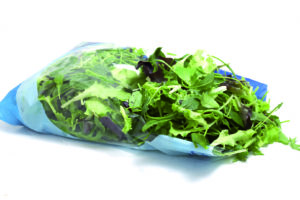Over 100 leading packaging industry professionals met last February in Brussels for the fourth annual packaging conference 2019, organized by Intergraf, in partnership with FTA Europe and Smithers Pira and sponsored by GAMA International, TRESU Group and Kodak
 With the beginning of the meeting Sante Conselvan, FTA Europe president, welcomed the participants, underlining the importance of collaboration between associations to gather experiences and different market approaches, remembering that the day before was presented an important result of cooperation: the Flexo Best Practice Toolbox, a technical eBook for those working in flexographic printing, that is currently available as an iBook on Apple devices.
With the beginning of the meeting Sante Conselvan, FTA Europe president, welcomed the participants, underlining the importance of collaboration between associations to gather experiences and different market approaches, remembering that the day before was presented an important result of cooperation: the Flexo Best Practice Toolbox, a technical eBook for those working in flexographic printing, that is currently available as an iBook on Apple devices.
The tone of the conference was set by the first speaker Ania Krolak, Managing Consultant at Smithers Pira, who declared that packaging is currently the “most dynamic sector of print”.
These are the key trends: the rising popularity of online shopping has led to an increasing demand for corrugated packaging; new technologies have led to major technological developments (personalized packaging; reducing food wastage through smart packaging; tracking packaging throughout the supply chain; smart labels and packs; innovative packaging materials); digital print has seen a significant increase but still faces several challenges (cost of consumables, that is ink and substrates; digital printing is not suitable for long runs; colors not same as conventional printing; some premium features are not available yet); circular economy concept is becoming increasingly important to all the value chain participants; Industry 4.0 is encouraging a transition towards the smart factory; E-commerce.
 In short, all the actors (manufacturers, creative agencies, designers, marketing, converters, printers and brand owners should adopt a sort of “eco-system” and a circular thinking to satisfy customer needs and solve current challenges, consequently within the supply chain collaboration is needed to develop the best products, always keeping in mind the sustainability.
In short, all the actors (manufacturers, creative agencies, designers, marketing, converters, printers and brand owners should adopt a sort of “eco-system” and a circular thinking to satisfy customer needs and solve current challenges, consequently within the supply chain collaboration is needed to develop the best products, always keeping in mind the sustainability.
At the end of the event, delegates took home an exclusive copy of Smithers Pira’s European Printed Packaging Trends. The report forecasts the market share of flexographic printing will be eroded by 2022 because of the increase of digital printing market in packaging. Nevertheless, printed flexographic packaging domination, in particular in corrugated and flexible packaging, is expected to remain. It is expected to reach €32 billion in 2022, corresponding to an increase of 1% compared to 2017.
Packaging and respect for the environment
 Kestutis Sadauskas, Director for the Green Economy at DG Environment, European Commission, focused on “living well within planetary boundaries”. Importantly, he highlighted that “we [the European Commission] don’t demonize plastic, we don’t want to get rid of it […], but the trouble with it is the misconduct of its use”. Rather, the Commission’s main focus are the “prevention of waste” and the eco-design of products. He recalled the important Plastics Strategy objective: by 2030 all plastics packaging must be reusable or easily recycled.
Kestutis Sadauskas, Director for the Green Economy at DG Environment, European Commission, focused on “living well within planetary boundaries”. Importantly, he highlighted that “we [the European Commission] don’t demonize plastic, we don’t want to get rid of it […], but the trouble with it is the misconduct of its use”. Rather, the Commission’s main focus are the “prevention of waste” and the eco-design of products. He recalled the important Plastics Strategy objective: by 2030 all plastics packaging must be reusable or easily recycled.
Peter Ragaert, Professor at Ghent University and Project Manager at Pack4Food, based in Ghent, a company that helps companies to improve food packaging, bringing together companies and research institutes to achieve large and small improvements in thepackaging chain. His messages were very clear: always consider the packaged product to optimize the packaging (for which to be functional is a must); explore different collection, sorting and recycling strategies but keeping in mind that food quality ánd safety remain very important. In one sentence improving packaging doesn’t mean to create more or less packaging but a customized pack is the solution.

Mark Shaw, Innovations Manager at Parkside Flex, headquartered in Normanton, West Yorkshire UK) is a innovation-led flexible packaging manufacturer. Its Advanced PackagingEXpert (APEX) Innovation team delivers the latest thinking in packaging solutions. Mark focused on the development of compostable packaging, which could offer a potential solution to issues of recycling. Improving the functionality of packaging to prevent waste was identified as one of the most important changes packaging producers should focus on. From coffee pouches to confectionery packaging, the Parkside Apex innovation team has developed a range of paper and film barrier duplex and triplex lamination films under the brand Park-2-Nature® that are fully accredited to EN13432 and Vincotte OK Compost Standards for both home and industrial composting of packaging. They use paper made from FSC, PEFC accredited pulp: Natureflex , a cellulose made from sustainably grown eucalyptus trees and a bio-polymer derived from natural resources such as sugarcane, cassava and corn.
Bernd Brandt, Senior Consultant at denkstatt GmbH, based in Wien, clarified that optimized packaging often provides environmental advantages. The reason is that benefits of prevented food waste are usually much higher than environmental impacts of production or optimization of the packaging involved. He spoke also about design for recycling stating that it is good if the function of the packaging is not affected, if the mass of the packaging is not significantly increased (additional production impacts do not exceed recycling benefits), and if additional costs of production, collection, sorting and recycling do not exceed the recycling benefit.
The perception and design of packaging

Joanna Stephenson, Marketing Director of EFIA and Managing Director of PHD Packaging, addressed the trends, focusing on six key areas: consumerism, technology, economics, sustainability, fashion & design and retail revolution. Consumers today are more conscientious and self-sufficient, she explained, plus they desire authenticity and immediacy.
Olga Munroe, Head of The Retail Institute at Leeds Beckett University, spoke about sensory marketing. She explored the internal and external triggers which drive purchases, explaining that retailers need to consider the entire sensory suite (vision, smell, sound, touch and taste) to create truly memorable products. Because for example 75% of our emotions are influenced by smell and a customer that picks up a product in a store is 96% more likely to purchase it.
Packaging design topic was further elaborated on by Guy Douglass, Creative Strategy Director at Parker Williams Ltd. / Sun Branding Solutions. He spoke about design dedicated to ageing population, very hot topic: over the last 50 years the global fertility rate has halved and life expectancy has increased by almost 20 years, globally the number of senior citizens is expected to double again by 2050; in the EU last year were recorded more births than deaths.

So the over 50s are going to continue to grow as a key target audience for every manufacturers of every kind of goods. As regards packaging all actors of the packaging chain must consider the needs of the older generations in development of packaging. But what does this mean for packaging design, asked the speaker.
The answer is creating an inclusive design, because we are more the same than we are different.
FTA Europe Diamond Award 2018 winner Pierluigi Gava showcased the success of his company, Cartotecnica Postumia, an Italian flexo printer who engaged in lean thinking in organization and production, developing internal skills, transforming through the company through cultural evolution of people, connecting demand with delivery and redesigning the sale process. The results listed in the figure are absolutely meaningful.






















